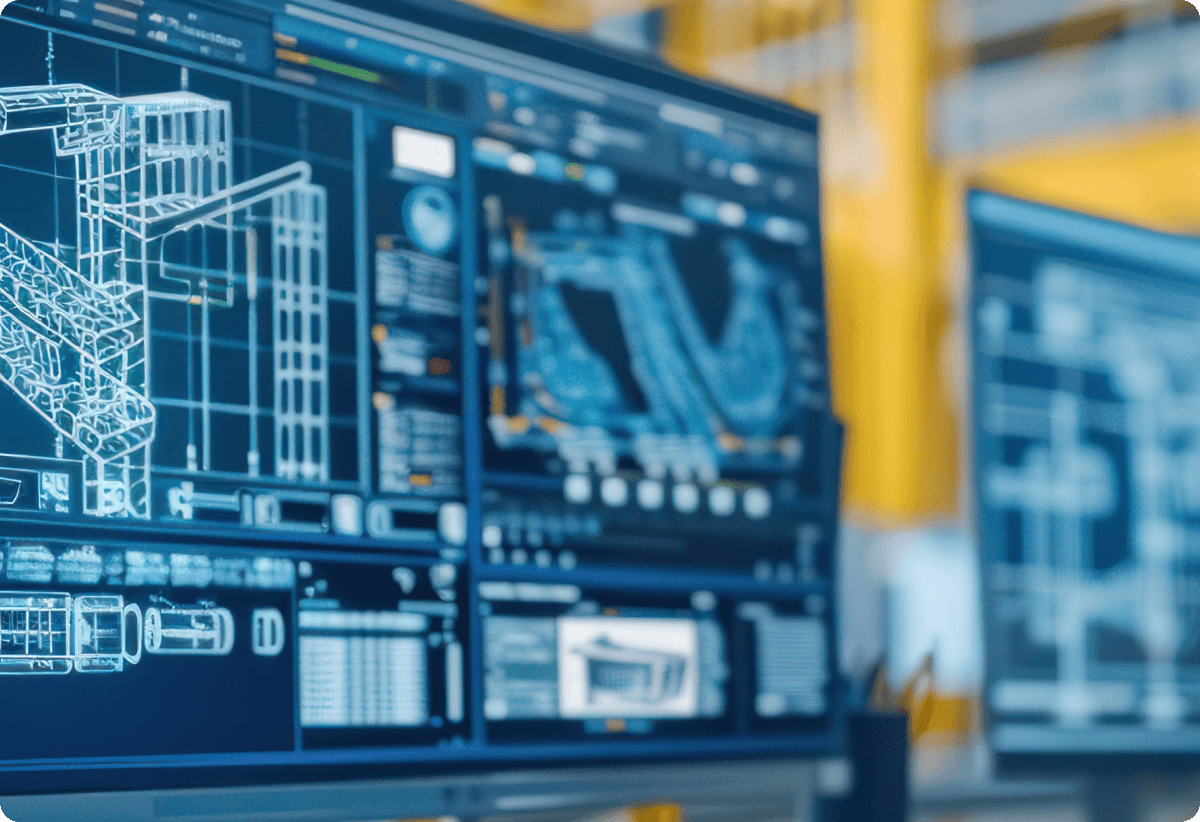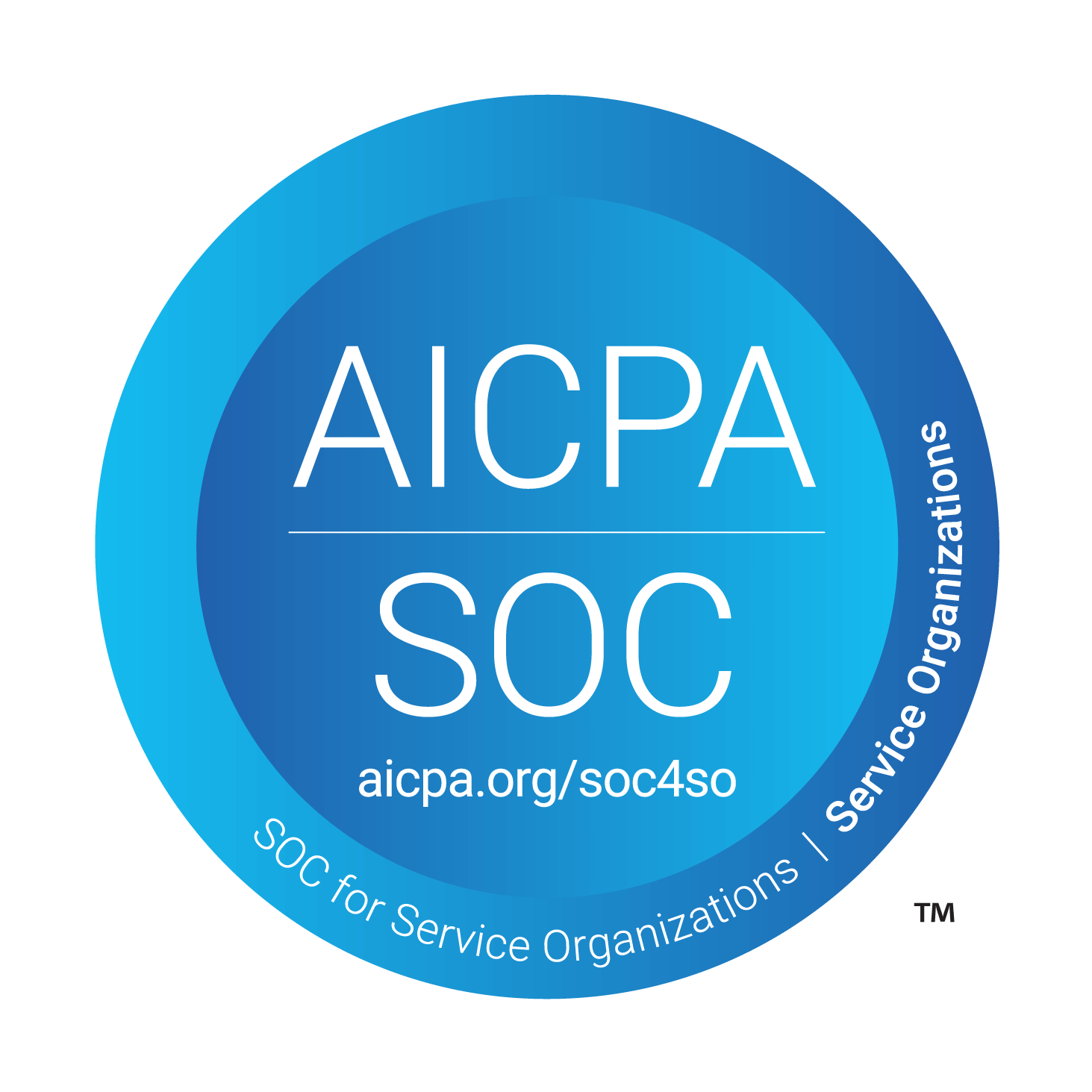Mike Lee
Updated: Oct 30, 2023
The 5 Key Differences between Airtable & Layer App
The 5 Key Differences between Airtable & Layer App
Understand the key differences between Airtable and Layer
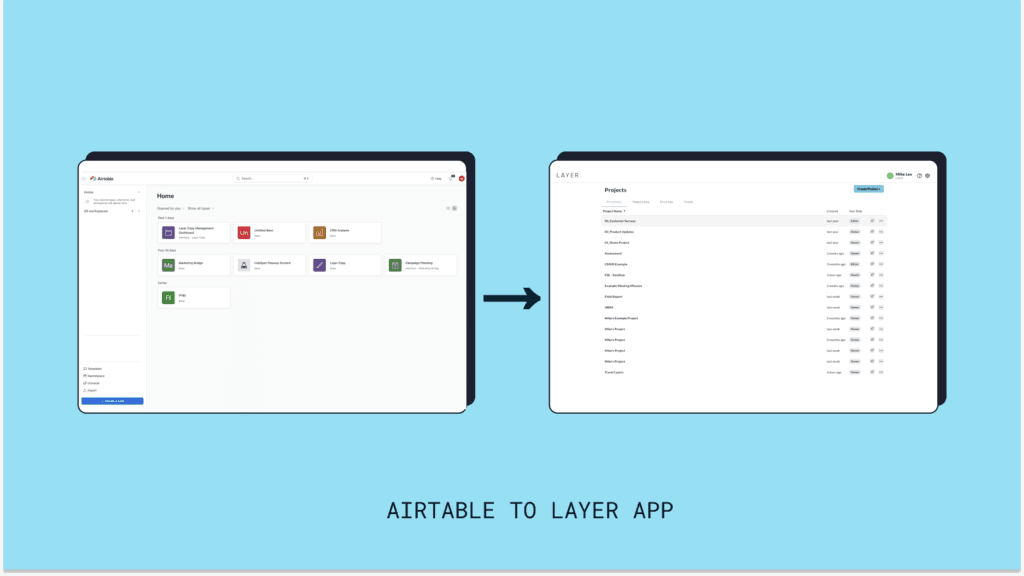
Transitioning from Airtable to Layer App?
Need to understand the major differences between the systems and where to find things? In this workflow guide, we’ll explain the 5 key differences between Airtable and Layer App and how you can make best use of these features as an AEC professional.
Remember, Layer App users always have access to free implementation and planning services from our customer success team!
-> Schedule Onboarding!
What are the key differences between Layer App & Airtable?
Airtable and Layer are both similar in the respect that they allow users to easily combine many complex data sources in a tabular form, then use that data to build workflows. Both systems are built on a database so can combine cell based data with other data or file types such as photos, barcodes, formulas, and more. However, Layer App is built specifically to manage BIM or Building Data.
Here are the 5 main differences between the two tools:
#1 Workspace vs. Project Centricity
As architects, engineers, or other building professionals, our lives are centered around projects. Projects always involve outside collaboration partners, stakeholders, vendors, and more.
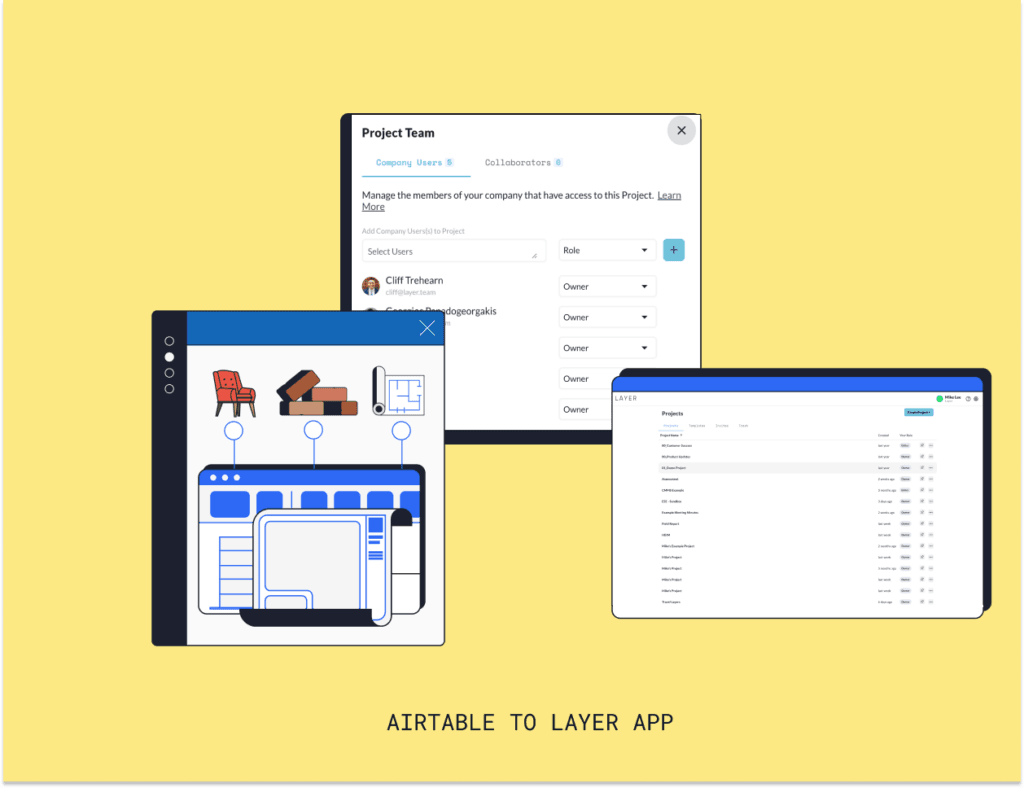
Layer access is managed around your projects rather than by your overall workspace. All Layer users have access to an unlimited number of projects and unlimited collaborators at all plan levels. That means you can invite as many outside stakeholders as needed to collaborate on your project without buying extra licenses.
How to best leverage this feature
Keep everyone on the same page & share data efficiently! Use collaborator access to share and receive feedback or markups, transfer information to other project team members, or submit documentation to your clients.
#2 Navigation by Categories
A Category in Layer App is similar to a Table in Airtable. Each category is an independent database that you can customize to suit your needs.
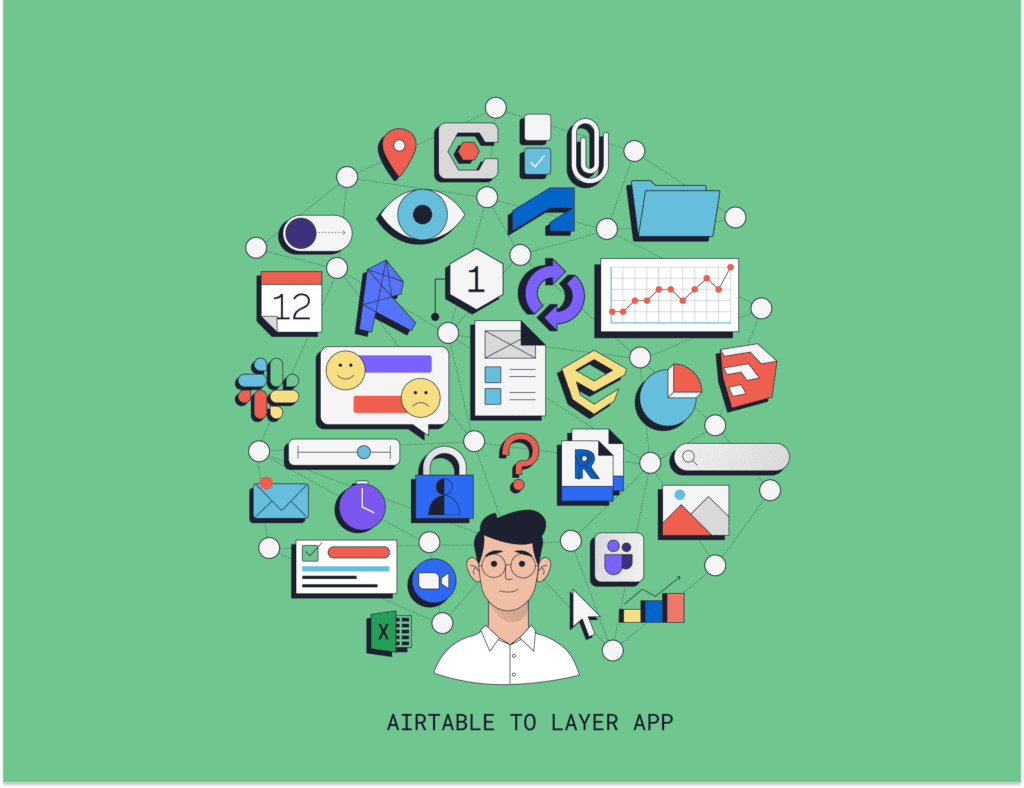
Categories can be a tangible objects such as a Room, or Doors. They can also be intangible, such as workflows, inspections, or other actions like tasks or assignments. You can have as many Categories in a project as you need for different data types.
How to best leverage this feature
Layer App has built in Category templates that can be applied to both new & existing projects. You'll find standard workflows such as conditions assessments and door surveys, and library Categories such as FF&E.
#3 Data Input: Record ID vs. Categories AND Models
Models tend to be large with many parameters attached. Layer App treats Models as their own data type due to this complex nature. With Layer App, the model or drawing IS your record ID. Drawing and Model views are native to Layer App so you can see your categories in the context of the building.
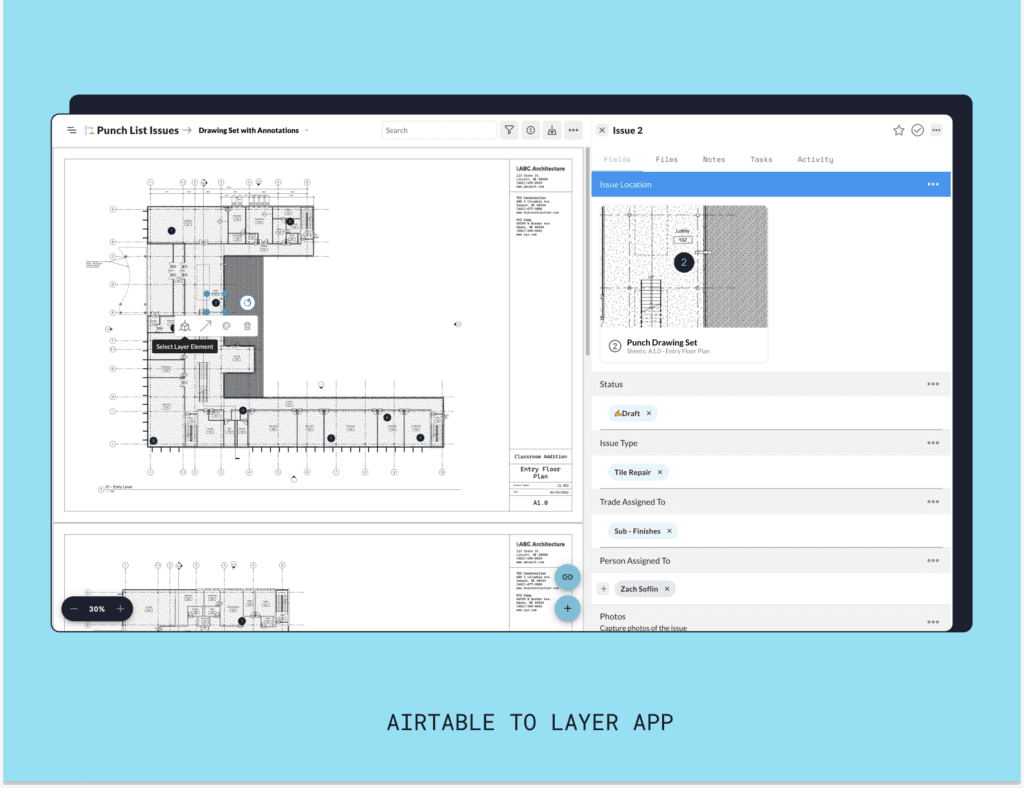
How to best leverage this feature
Input and manage data in the way that makes the most sense spatially! Attach photos of a building directly to their location in a model from your phone while you walk a site. Assign tasks pin pointed to a drawing while you take meeting minute notes. Use a tablet to conduct a surveys and never need a clipboard again.
#4 Data Output: Tabular, Document, & Model Views
The creative aspect of design is interspersed by periods of generating deliverables, checking or double checking our work, then endless meetings to discuss these documents. Beyond traditional tabular and gallery views, with Layer App, you can visualize your data as a report, in a model, or on a drawing.
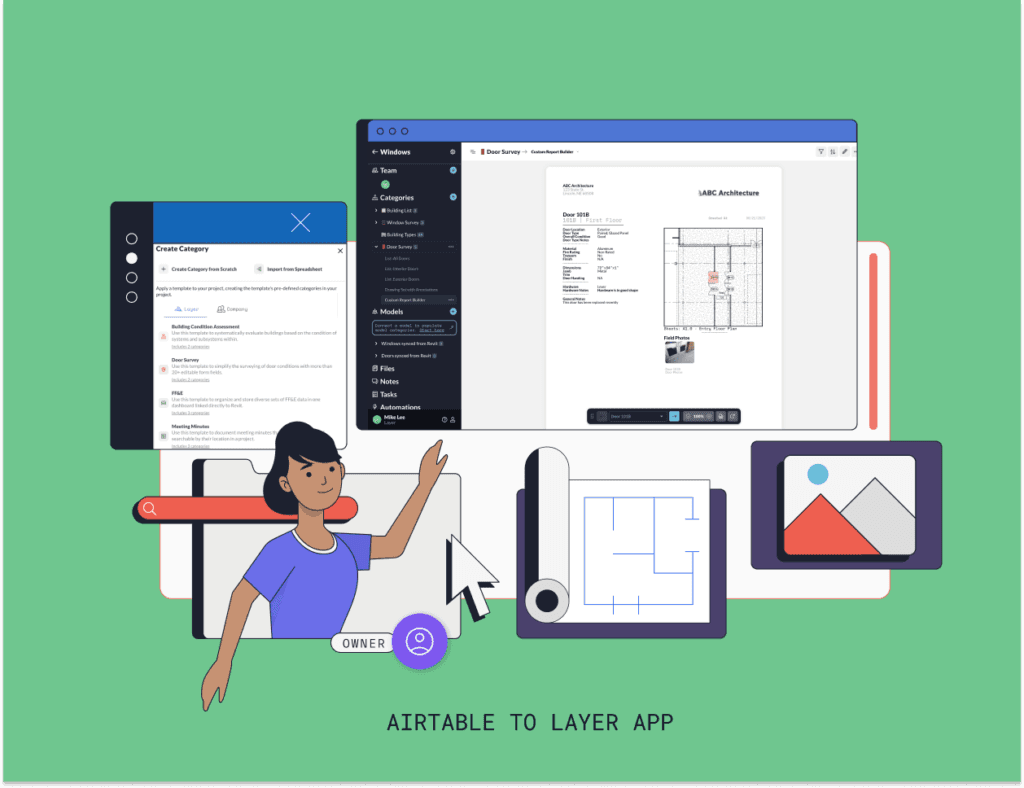
How to best leverage this feature
Go straight to the source during a meeting, use a drawing view to walk through issues or discuss markups. Use the document generator to create stunning room data sheet templates without ever opening up another application. Create libraries of FF&E, BIM standards, families, and more!
#5 Separate Windows vs. Native Revit Integration & Revit Add-in
There's no need to keep separate tabs open with Layer. Architects, designers, and engineers can access data in Layer through the Revit add-in. Data can be synced from Layer to Revit and vice versa. You can operate in the platform of your choosing based on your circumstances. Enter data in the Layer App on any device so you can view it in Revit when you return to the office. Or the other way around!

How to best leverage this feature
Work on whichever device and whatever platform you're most comfortable with! Use a tablet to collaborate from the waiting room of a doctor's appointment. Enter data from your phone while on-site. Use Layer App directly in Revit while you work in your normal environment!
Always remember, you don't have to go it alone.
All Layer App plans include free on-boarding and implementation. Want to chat with our team about your specific onboarding needs?
